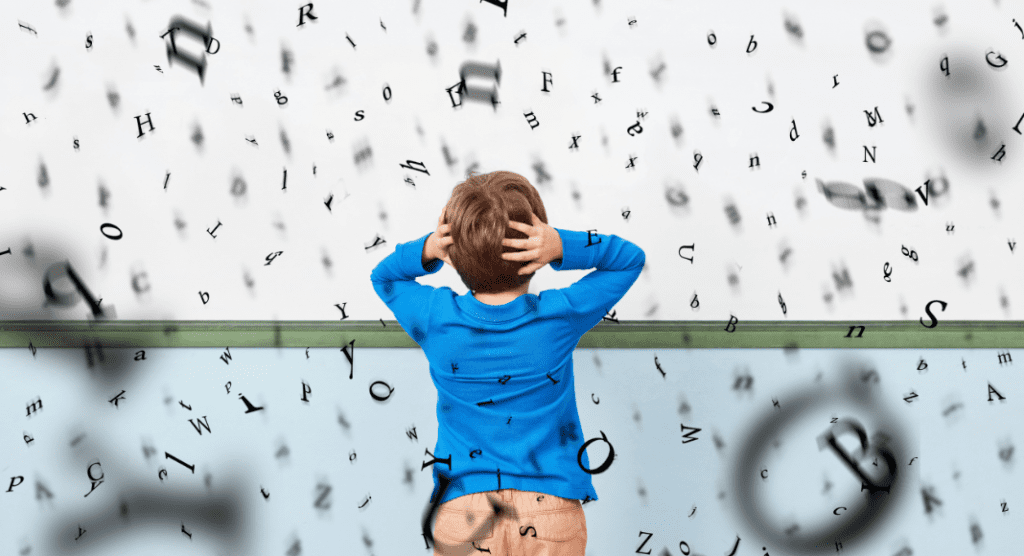 The American Optometric Association estimates that 1 in 4 children has an undetected vision problem that affects their ability to learn. Why does the problem go undetected? One big reason is that school vision screenings and conventional eye exams typically only evaluate visual acuity, or seeing clearly.
The American Optometric Association estimates that 1 in 4 children has an undetected vision problem that affects their ability to learn. Why does the problem go undetected? One big reason is that school vision screenings and conventional eye exams typically only evaluate visual acuity, or seeing clearly.
That means they may not detect what developmental optometrists call a functional vision problem, which can affect your child’s ability to spell, read, and write effectively — and can even cause behavioral issues.
This is why it’s so critical for parents to know the warning signs of a functional vision problem. Below, I’ll explain what functional vision is and then describe a variety of symptoms that can indicate a functional vision problem.
What is Functional Vision?
Never heard of functional vision? You’re not alone. In my 25 years as a developmental optometrist, time and again I’ve seen how a child’s undiagnosed functional vision problem can baffle parents, teachers, and other healthcare professionals.
Because they’re not familiar with the signs of a functional vision problem, they’re unable to pinpoint why an otherwise normal child is struggling with basic types of schoolwork. And to make matters worse, even if the child has 20/20 vision or wears prescription lenses, this won’t necessarily remedy a functional vision problem.
But you can begin to educate yourself on functional vision, starting with this basic definition: Functional vision is how your entire visual system – the eyes, the brain, the visual pathways – works together to help you interact with your environment.
More specifically, functional vision includes the following visual skill areas:
Eye teaming. In normal vision, this occurs when both eyes align to focus on the same point in space and work together in a precise and coordinated way.
Good eye teaming allows for normal depth perception, as well as vision that is comfortable, efficient, and single (as opposed to double). Imagine how difficult it would be to read if, for example, you experienced intermittent double vision.
Eye focusing. This encompasses the ability to see an object clearly and to shift focus between objects at different distances.
For example, a child may have difficulty keeping reading material in focus and even experience the text as intermittently or constantly blurry. Or, a child may be able to see the text in a book clearly but have difficulty shifting focus from the book to the whiteboard and then back to the book.
Eye movement. This includes the eyes’ ability to maintain fixation on a moving object through space, to move fixation from one object to another, or to sustain fixation on a stationary object.
Moving your eyes across this line of text and following a fly ball into your glove both require accurate and efficient eye movements. Maintaining eye contact when someone is talking to you is an example of sustaining fixation on a stationary object.
 Symptoms of Functional Vision Problems
Symptoms of Functional Vision Problems
Difficulties with any or all of the functional vision skills described above can understandably cause schoolwork challenges for your child. Fortunately, telltale signs of a functional vision problem can be fairly easy to spot — if you know what to look for.
Be alert for symptoms like the following, which I’ve divided into four categories.
Observable traits
Sometimes a functional vision problem in your child can manifest itself in observable ways like these:
- A turned, or “crossed,” eye
- Frequent tilting of the head toward one side
- Excessive squinting, blinking, and/or closing of one eye
- Any type of action that suggests one eye is favored over the other
- Poor visual/motor skills in play, like trouble catching and/or throwing objects
- “Clumsy” movements such as frequently bumping into furniture, walls, or other people
- Reports of blurry vision or double vision
Work skills
When it’s time for schoolwork and related activities, a functional vision problem could be rearing its head when your child does things like:
- Repeatedly confuses left and right directions
- Holds a book or object unusually close to the face
- Twists or tilts head toward a book or object to favor one eye
- Frequently loses their place when reading or copying text from the board or a book
- Has difficulty comprehending and/or remembering what they just read
- Struggles with remembering, identifying, and drawing geometric shapes
- Often reverses words when reading
- Uses finger to read
- Frequently skips words and/or has to backtrack and re-read words
- Repeatedly omits small words when reading
- Has an unusually hard time with handwriting
- Moves head to follow something instead of just moving the eyes
Physical indications
There can also be physical signs of a functional vision problem, like if your child:
- Rubs eyes during or after short periods of reading
- Complains of burning or itching eyes (which may look red and irritated)
- Complains of headaches (especially in area of forehead or temples)
- Frequently gets nauseous or dizzy
- Seems to get motion sickness easily
Behavior-related
Functional vision problems can also affect how your child behaves. Here are some examples:
- Exhibits a short attention span
- Gets nervous, irritable, or quickly fatigued while reading or looking at books, or doing other visually intense near-work
- Loves to learn by asking questions and having conversations but is not interested in reading
- Shows signs of emotional or developmental immaturity
- Gets frustrated easily
- Doesn’t get along well with others
In fact, I’ve even seen cases where parents have brought in a child diagnosed with ADHD, only to discover that many (or all) of the child’s symptoms could be attributed to a functional vision problem.
Special note on age
The symptoms I’ve described are geared toward school-aged children. But children of all ages, as well as adults, can have a functional vision problem. It’s often the case, however, that a functional vision problem will manifest in school-aged kids as the school work gets more difficult and, specifically, more visually challenging.
A Vision Quiz Can Be the First Step Toward Detecting a Problem
Functional vision problems — especially if left untreated — can be serious. But the good news is that they can often be helped with optometric vision therapy.
If your child has any of the above symptoms, it’s by no means a definitive indication of a functional vision problem. But it’s a good starting point. To take the first step toward diagnosis, I strongly recommend taking The Vision Therapy Center’s free online Vision Quiz.
Click here to take the Vision Quiz.
About the author: Dr. Kellye Knueppel is an award-winning developmental optometrist specializing in vision related learning problems, sports vision, and rehabilitative optometry. She is board certified in vision development as a Fellow of the College of Optometrists in Vision Development. Since opening The Vision Therapy Center in 1995, she has dedicated herself to helping people overcome their visual problems.












